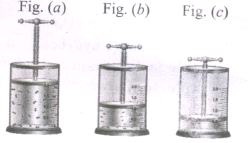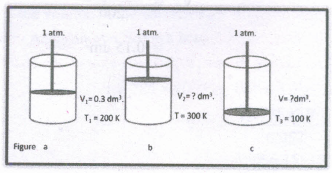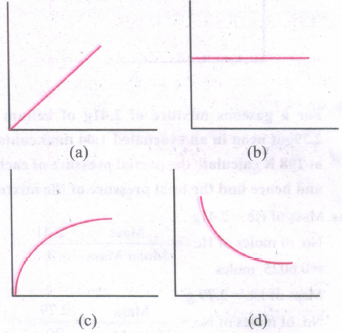- State Board
-
12th Standard
-

Biology
-

Computer Applications
-

Computer Science
-

Business Maths and Statistics
-

Commerce
-

Economics
-

Maths
-

Chemistry
-

Physics
-

Computer Technology
-

History
-

Accountancy
-

Tamil
-

Maths
-

Chemistry
-

Physics
-

Biology
-

Computer Science
-

Business Maths and Statistics
-

Economics
-

Commerce
-

Accountancy
-

History
-

Computer Applications
-

Computer Technology
-

English
12th Standard stateboard question papers & Study material
தமிழ் Subjects
English Subjects
-
-
11th Standard
-

Maths
-

Biology
-

உயிரியல் - தாவரவியல்
-

Economics
-

Physics
-

Chemistry
-

History
-

Business Maths and Statistics
-

Computer Science
-

Accountancy
-

Commerce
-

Computer Applications
-

Computer Technology
-

Tamil
-

Maths
-

Commerce
-

Economics
-

Biology
-

Business Maths and Statistics
-

Accountancy
-

Computer Science
-

Physics
-

Chemistry
-

Computer Applications
-

History
-

Computer Technology
-

Tamil
-

English
11th Standard stateboard question papers & Study material
தமிழ் Subjects
English Subjects
-
-
9th Standard
-

-

-

-

-

-

-

Maths
-

Science
-

Social Science
-

Maths
-

Science
-

Social Science
9th Standard stateboard question papers & Study material
தமிழ் Subjects
English Subjects
-
-
6th Standard
-

Maths
-

Science
-

Social Science
-

Maths
-

Science
-

Social Science
6th Standard stateboard question papers & Study material
தமிழ் Subjects
English Subjects
-
-
10th Standard
-

Maths
-

Science
-

Social Science
-

Tamil
-

Maths
-

Science
-

Social Science
-

English
-

English
10th Standard stateboard question papers & Study material
தமிழ் Subjects
English Subjects
-
-
7th Standard
-

Maths
-

Science
-

Maths
-

Science
-

Social Science
7th Standard stateboard question papers & Study material
தமிழ் Subjects
English Subjects
-
-
8th Standard
-

கணிதம் - old
-

Science
-

Social Science
-

கணிதம்
-

Maths
-

Science
-

Social Science
8th Standard stateboard question papers & Study material
தமிழ் Subjects
English Subjects
-
-
12th Standard
- CBSE Board
-
12th Standard CBSE
-

Biology
-

Physics
-

Chemistry
-

Maths
-

Accountancy
-

Introductory Micro and Macroeconomics
-

Business Studies
-

Economics
-

Computer Science
-

Geography
-

English
-

History
-

Indian Society
-

Physical Education
-

Sociology
-

Tamil
-

Bio Technology
-

Engineering Graphics
-

Entrepreneurship
-

Hindi Core
-

Hindi Elective
-

Home Science
-

Legal Studies
-

Political Science
-

Psychology
12th Standard CBSE Subject Question Paper & Study Material
-
-
11th Standard CBSE
-

Mathematics
-

Chemistry
-

Biology
-

Physics
-

Business Studies
-

Accountancy
-

Economics
-

Computer Science
-

Bio Technology
-

English
-

Enterprenership
-

Geography
-

Hindi
-

History
-

Home Science
-

Physical Education
-

Political Science
-

Psychology
-

Sociology
-

Applied Mathematics
11th Standard CBSE Subject Question Paper & Study Material
-
- 10th Standard CBSE
-
9th Standard CBSE
-

Mathematics
-

Social Science
-

Science
-

English
-

Hindi
9th Standard CBSE Subject Question Paper & Study Material
-
-
8th Standard CBSE
-

Science
-

Social Science
-

Mathematics
-

English
8th Standard CBSE Subject Question Paper & Study Material
-
-
7th Standard CBSE
-

Mathematics
-

Science
-

Social Science
-

English
7th Standard CBSE Subject Question Paper & Study Material
-
-
6th Standard CBSE
-

Mathematics
-

Science
-

Social Science
-

English
6th Standard CBSE Subject Question Paper & Study Material
-
-
12th Standard CBSE
- Free Online Test
- News
- Study Materials
-
Students
-

Stateboard Tamil Nadu
-

CBSE Board
-

Free Online Tests
-

Educational News
-

Scholarships
-

Entrance Exams India
-

Video Materials
Study Materials , News and Scholarships
-
-
Students

11th standard Coordination Compounds and Bio-Coordination Compounds K RAJA Sep-03 , 2018
UNIT TEST 6
UNIT TEST 6
11th Standard
-
Reg.No. :
Chemistry
USING BLUE OR BLACK PEN ONLY
Time :
01:00:00 Hrs
Total Marks :
75
-
Gases deviate from ideal behavior at high pressure. Which of the following statement(s) is correct for non-ideality?
(a)at high pressure the collision between the gas molecule become enormous
(b)at high pressure the gas molecules move only in one direction
(c)at high pressure, the volume of gas become insignificant
(d)at high pressure the intermolecular interactions become significant
-
Rate of diffusion of a gas is ________
(a)directly proportional to its density
(b)directly proportional to its molecular weight
(c)directly proportional to its square root of its molecular weight
(d)inversely proportional to the square root of its molecular weight
-
Which of the following is the correct expression for the equation of state of van der Waals gas?
(a)\(\left( P+\frac { a }{ { n }^{ 2 }{ V }^{ 2 } } \right) (V-nb)=nRT\)
(b)\(\left( P+\frac { na }{ { n }^{ 2 }{ V }^{ 2 } } \right) (V-nb)=nRT\)
(c)\(\left( P+\frac { { an }^{ 2 } }{ { V }^{ 2 } } \right) (V-nb)=nRT\)
(d)\(\left( \frac { P+{ n }^{ 2 }{ a }^{ 2 } }{ { V }^{ 2 } } \right) (V-ab)=nRT\)
-
When an ideal gas undergoes unrestrained expansion, no cooling occurs because the molecules _____________
(a)are above inversion temperature
(b)exert no attractive forces on each other
(c)do work equal to the loss in kinetic energy
(d)collide without loss of energy
-
Equal weights of methane and oxygen are mixed in an empty container at 298 K. The fraction of total pressure exerted by oxygen is ___________
(a)\(\frac { 1 }{ 3 } \)
(b)\(\frac { 1 }{ 2 } \)
(c)\(\frac { 2 }{ 3 } \)
(d)\(\frac { 1 }{ 3 } \times 273\times 298\)
-
The temperatures at which real gases obey the ideal gas laws over a wide range of pressure is called ____________-
(a)Critical temperature
(b)Boyle temperature
(c)Inversion temperature
(d)Reduced temperature
-
A bottle of ammonia and a bottle of HCI connected through a long tube are opened simultaneously at both ends. The white ammonium chloride ring first formed will be ___________
(a)At the center of the tube
(b)Near the hydrogen chloride bottle
(c)Near the ammonia bottle
(d)Throughout the length of the tube
-
The value of universal gas constant depends upon __________
(a)Temperature of the gas
(b)Volume of the gas
(c)Number of moles of the gas
(d)units of Pressure and volume.
-
The value of the gas constant R is ____________
(a)0.082 dm3 atm.
(b)0.987 cal mol-1K-1
(c)8.3 J mol-1 K-1
(d)8 erg mol-1 K-1
-
Use of hot air balloon in sports at meteorological observation is an application of __________________
(a)Boyle's law
(b)Newton's law
(c)Kelvin's law
(d)Brown's law
-
The table indicates the value of van der Waals constant 'a' in (dm3)2 atm. mol-2.
Gas O2 N2 NH3 CH4 a 1.360 1.390 4.170 2.253 The gas which can be most easily liquefied is ______________
(a)O2
(b)N2
(c)NH3
(d)CH4
-
Consider the following statements
i) Atmospheric pressure is less at the top of a mountain than at sea level
ii) Gases are much more compressible than solids or liquids
iii) When the atmospheric pressure increases the height of the mercury column rises.
Select the correct statement(a)I and II
(b)II and III
(c)I and III
(d)I, II and III
-
If temperature and volume of an ideal gas is increased to twice its values, the initial pressure P becomes _________
(a)4P
(b)2P
(c)P
(d)3P
-
At identical temperature and pressure, the rate of diffusion of hydrogen gas is 3\(\sqrt { 3 } \) times that of a hydrocarbon having molecular formula CnH2n-2. What is the value of n ?
(a)8
(b)4
(c)3
(d)1
-
Suppose there is a tiny sticky area on the wall of a container of gas. Molecules hitting this area stick there permanently. Is the pressure greater or less than on the ordinary area of walls?
-
Which of the following gases would you expect to deviate from ideal behaviour under conditions of low temperature F2, Cl2 or Br2? Explain.
-
Distinguish between diffusion and effusion.
-
Aerosol cans carry clear warning of heating of the can. Why?
-
Why do astronauts have to wear protective suits when they are on the surface of moon?
-
When ammonia combines with HCI, NH4CI is formed as white dense fumes. Why do more fumes appear near HCI ?
-
Write a short note on the consequence of Boyle's law. (or) Give the relationship between pressure and density
-
When a real gas is converted from its initial to final state by adiabatic expansion, it is not possible to calculate its volume using Boyle's law. Why?
-
Calculate the pressure exerted by 2 moles of sulphur hexafluoride in a steel vessel of volume 6 dm3 at 70°C assuming it is an ideal gas.
-
State Boyle's law.
-
A balloon filled with air at room temperature and cooled to a much lower temperature can be used as a model for Charle's law.
-
Name two items that can serve as a model for Gay Lusaac's law and explain.
-
Give the mathematical expression that relates gas volume and moles.
-
What are ideal gases? In what way real gases differ from ideal gases.
-
Give suitable explanation for the following facts about gases.
Gases don't settle at the bottom of a container. -
Suggest why there is no hydrogen (H2) in our atmosphere. Why does the moon have no atmosphere?
-
When the driver of an automobile applies brake, the passengers are pushed toward the front of the car but a helium balloon is pushed toward back of the car. Upon forward acceleration the passengers are pushed toward the front of the car. Why?
-
In the below figure, let us find the missing parameters [volume in (b) and pressure in (c)]
P1 = 1 atm, P2 = 2 atm, P3 = ? atm
V1 = 1dm3, V2 =? dm3, V3 = 0.25 dm3
T1 = 298 K, T2 = 298 K, T3 = 298 K.

-
-
Write the Van der Waals equation for a real gas. Explain the correction term for pressure and volume.
-
Derive the values of critical constants in terms of van der Waals constants.
-
-
-
A sample of gas at 15°C at 1 atm. has a volume of 2.58 dm3. When the temperature is raised to 38°C at 1 atm does the volume of the gas increase? If so, calculate the final volume.
-
Derive the ideal gas equation by combining the empirical gas laws.
-
-
-
In an experiment of verification of Charle's law, the following are the set of readings taken by a student.
Experiment Volume (L) Temperature (0C) 1 1.54 20 2 1.65 40 3 1.95 100 4 2.07 120 What is the average value of the constant of proportionality ?
-
A neon-di-oxygen mixture contains 70.6 g of di-oxygen and 167.5 g of neon. If the pressure of the mixture of gases in the cylinder is 25 bar, what is the partial pressure of di-oxygen and neon in the mixture? (Atomic mass of Ne = 20u)
-
-
-
Solve

Effect of temperature on volume of the gas to verify Charles law All the container a, b and c have same pressure of 1 atm. If T1, T2, and T3 are, respectively, at 200, 300 and 100 K, and V1 = 0.3 dm3, calculate V2 and V3. -
Use the graphs to answer the question below.

i) Which of the graphs is the best representation of pressure and temperature (measured I kelvin) for one mole of ideal gas
ii) Which of the graphs is the best representation of pressure and volume of one mole of an ideal gas.
iii) Which of the above graph represents PV vs P of one mole of an ideal gas?
-
-
-
In an experimant of verification of Charle's law, the following are the set of readings taken by a student
Experiment Volume (L) Temperature (°C) 1 1.54 20 2 1.65 40 3 1.95 100 4 2.07 120 What is the average value of the constant of proportionality?
-
Which of following flasks has higher pressure
(a) 5.00 L containing 4.15 g of Helium at 298 K
(b) 10.0 L containing 56.2 g Argon at 303 K
-
PART - A
15 x 1 = 15
PART - B
Answer six questions. Question No. 24 is compulsory. Answer any five from
the remaining.
6 x 2 = 12
PART - C
Answer six question. Question No. 32 compulsory. Answer any 5 form the
remaining
6 x 3 = 18
PART - D
Answer all five questions
5 x 5 = 25






 11th Standard Chemistry Syllabus
11th Standard Chemistry Syllabus  11th Standard Chemistry Study Materials
11th Standard Chemistry Study Materials 11th Standard Chemistry MCQ Practise Tests
11th Standard Chemistry MCQ Practise Tests 

Manikandan 23-Oct-2018
sir ,it cannot download